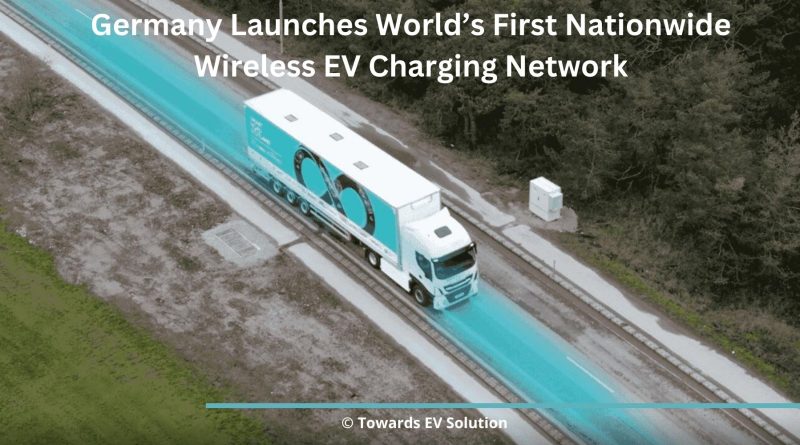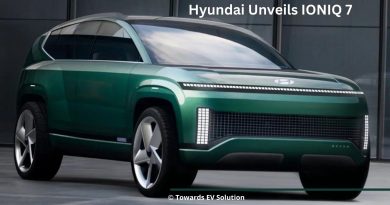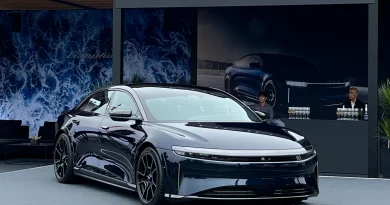Germany Launches World’s First Nationwide Wireless EV Charging Network – Transforming Global EV Infrastructure
Germany has launched the world’s first nationwide wireless EV charging network, setting a new benchmark for the future of EV infrastructure. This groundbreaking initiative, spearheaded by BMW Group and Siemens Mobility, in collaboration with the German government, marks the beginning of a new era of convenience for electric vehicle users, reducing dependency on traditional charging stations.
Germany, already a global leader in renewable energy and EV adoption, aims to further accelerate its transition to green mobility by incorporating inductive wireless charging technology across key urban and highway routes. This technology allows EVs to charge as they move over specially embedded road sections, eliminating the need for physical plugs and cords.
Wireless Electric Vehicle Charging Market Size
According to Precedence Research’s report on the global wireless electric vehicle charging market size is calculated at USD 56.71 million in 2024 and is estimated to reach around USD 9,370.25 million by 2032. The market is expanding at a double-digit CAGR of 29.1% during the forecast period.
The global electric vehicle market seems set for the possibility of unprecedented heights due to increased technological development and favorable government policies. A report from IEA postulates that by 2023 the global stock of EV was stands at 16.5 million from 10 million in 2020. It is estimated that the market will have 145 million electric vehicles by this year of 2030 with Europe seen to cover much of this growth, especially after the Germany wireless charging plan.
Key Global Statistics on EV Adoption
According to the Global EV Outlook 2023 by the IEA:
- China leads the world with 9 million EVs on the road in 2023, accounting for 55% of global EV sales.
- Europe follows closely, with 3.2 million EVs sold in 2023, and Germany contributing to a quarter of all European sales.
- The United States saw a significant rise, reaching 2.3 million EVs in 2023.
- Global EV sales grew by 35% from 2022 to 2023, and are expected to maintain a CAGR of 23% through 2030.
Global EV Market Growth (2020–2030)
| Year | Global EV Stock (Million Units) | Annual Sales (Million Units) | Growth Rate (%) |
| 2020 | 10 | 3.2 | — |
| 2021 | 11.6 | 4.4 | 37.5 |
| 2022 | 14.2 | 6.7 | 52.3 |
| 2023 | 16.5 | 8.5 | 35.0 |
| 2025 (Est.) | 30 | 12.5 | 38.0 |
| 2030 (Est.) | 145 | 40 | — |
This data can be used to plot a graph that showcases the surge in EV adoption and stock from 2020 to the projected figures for 2030.
Among these, wireless charging for EV’s or inductive charging is one of the emerging important infrastructures for EVs. The report on Global Electrification by the International Council on Clean Transportation (ICCT) also revealed that by the year 2035, inductive wireless charging solutions are set to cater 20% of the Global EV stations, especially to a great extent in Europe, North America, and East Asia which are highly developed countries.
Germany’s new wireless charging network which is expected to cross 5000 kilometers of highway of network by 2026 is expected to lead this change. This new infrastructure will limit the time and inconvenience of charging and at the same time increase efficiency in EV travel.
Across the globe, governments have been upping the ante in the provision of necessary infrastructure for electric vehicles due to the global push towards a low-carbon economy. The European Commission has provided goals for 30 million EVs on the European roads by 2030. In the same way, the Biden Administration in the United States has pledged to deploy 500,000 charging stations for the country to transition to electric mobility by 2030.
Global Government Subsidies for EV Infrastructure (2024)
| Region | EV Infrastructure Subsidy (USD Billion) | Target Charging Stations | % of EVs by 2030 |
| European Union | $20 | 1 million | 30% |
| United States | $15 | 500,000 | 25% |
| China | $40 | 1.2 million | 50% |
| Japan | $5 | 250,000 | 20% |
| South Korea | $3 | 100,000 | 15% |
Data for EV Wireless Charging Growth
| Year | Installed Wireless Charging Units (Worldwide) | Projected Growth Rate (%) |
| 2023 | 45,000 | — |
| 2024 (Est.) | 65,000 | 44% |
| 2025 (Est.) | 110,000 | 69% |
| 2030 (Est.) | 1,000,000 | — |
Germany’s nationwide wireless EV charging network is a principal step forward for the global electric vehicle market. Wireless charging of EVs and the adoption of the technology will be central to three key global goals as countries seek to reduce carbon emission for vehicle usage in their economies. Supported by the government policies and international affiliation, those infrastructures should be seen as models for other countries to build and marking the beginning of green mobility revolution in the world. Both IEA and ICCT projections point at the need for optimized charging solutions including on wireless technology in influencing the direction of electric vehicles.
Aditi, a powerhouse in the world of market research with over 14 years of experience, driving insightful narratives for the rapidly evolving electric vehicle (EV) industry. With a sharp eye for detail and an innate ability to decode trends across multiple sectors, Aditi is more than just an expert—she's a trendsetter. Her special interest in the ICT and automotive industries, combined with cross-domain expertise, allows her to approach EV news from a fresh, multifaceted perspective.
Aditi’s writing doesn’t just inform, it engages. She brings the technical world of EVs to life with clarity and vision, making complex trends digestible for professionals and curious readers alike. Her years of market research mean she’s always one step ahead, identifying the hidden shifts that shape the future of mobility. Whether it's the latest technological breakthroughs in battery innovation, or the impact of ICT developments on the automotive supply chain, Aditi ensures her readers are never in the dark.





